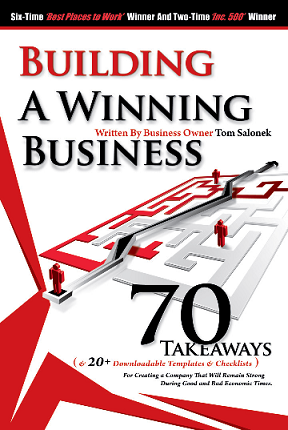15 Funniest Real Computer Error Messages
 Sometimes a computer error can transcend aggravation and make us laugh. Check out this post on Intertech’s website for the 15 Funniest Real Computer Error Messages.
Sometimes a computer error can transcend aggravation and make us laugh. Check out this post on Intertech’s website for the 15 Funniest Real Computer Error Messages.
 Sometimes a computer error can transcend aggravation and make us laugh. Check out this post on Intertech’s website for the 15 Funniest Real Computer Error Messages.
Sometimes a computer error can transcend aggravation and make us laugh. Check out this post on Intertech’s website for the 15 Funniest Real Computer Error Messages.
 As we enter 2014, Intertech and I have free learning opportunities and some new support programs for students:
As we enter 2014, Intertech and I have free learning opportunities and some new support programs for students:
Let’s make it a great ’14!
Tom
 “It would have been better to have more time,” Cheryl Campbell, a senior vice president at CGI Federal, the site designer, told the House Energy and Commerce Committee during a recent hearing on why the new federal health website has performed so poorly since its debut on October 1.
“It would have been better to have more time,” Cheryl Campbell, a senior vice president at CGI Federal, the site designer, told the House Energy and Commerce Committee during a recent hearing on why the new federal health website has performed so poorly since its debut on October 1.
Ms. Campbell’s comment makes me wonder about the planning process (or lack thereof) behind this colossal project. In my book, “Building a Winning Business,” I discuss the key role that planning plays in solid project execution. According to Gartner Group, 75 percent of software projects fail due to lack of technical consideration or poor planning.
How could a project of such magnitude been approved without a well-planned approach and realistic implementation timeline? Did CGI group agree to an unreasonable timeline in the beginning in order to win the contract? Is it possible no one from the government asked CGI the tough questions during the vendor interview process?
No matter how impressive a vendor may appear to be on paper, it all comes down to the specific people assigned to your project and their ability to get the job done. In Building a Winning Business, I dedicate an entire section to hiring and working with vendors. Rule number one: take the time to pick a good provider! This means looking at a firm’s long-term track record and the team who will be handling your work. It all begins with the vendor interview process, which I’ll explore in my next post in this series.
 Over $600 million! That’s how much the federal government has reported spending – so far – on information technology for the federal health insurance website HealthCare.gov. From errors to long waits, it’s been a debacle.
Over $600 million! That’s how much the federal government has reported spending – so far – on information technology for the federal health insurance website HealthCare.gov. From errors to long waits, it’s been a debacle.
Lack of adequate testing by the IT vendor, CGI, also has been blamed for the site’s navigational difficulties and extremely slow load times. In case you’re not familiar with it, CGI is the world’s fifth-largest information technology services company and the largest IT company in Canada, where it is headquartered.
As of Oct. 25, 700,000 U.S. citizens had filed applications for health insurance. The nagging tech issues must be resolved, and soon, if the predicted seven million interested Americans are going to be able to sign up for coverage through the exchanges by the end of the six-month enrollment period on March 31, 2014.
As the owner of an IT consulting business, I feel for the folks at CGI. Managing a project of this scale involving the federal government no doubt was beyond challenging. Still, when I heard that complete end-to-end testing had not taken place until mid-September, I had to scratch my head. With so much on the line, comprehensive testing tied to established milestones should have been happening early and often throughout the development process.
How could such an obviously world-class IT vendor overlook such a basic software development principle? I’m not going to speculate since I was not on the team, but I do think this very public software development fiasco creates an opportunity to dust off some of the time-tested software development principles described in my book, “Building a Winning Business.” I will discuss those principles in my next five posts and hope that by the time I’m finished with this series of posts, the new federal health care website finally will be working efficiently!
 A recent article in The Economist’s Schumpeter column said, “(for) consumers, the digital age is often exhilarating. For companies, it is often frightening… In practice, many (IT) departments fear being overwhelmed.” This focus of the article is right in-line with an article I wrote for the Star Tribune this October “Cost-center thinking hobbles IT power”
A recent article in The Economist’s Schumpeter column said, “(for) consumers, the digital age is often exhilarating. For companies, it is often frightening… In practice, many (IT) departments fear being overwhelmed.” This focus of the article is right in-line with an article I wrote for the Star Tribune this October “Cost-center thinking hobbles IT power”
In summary: